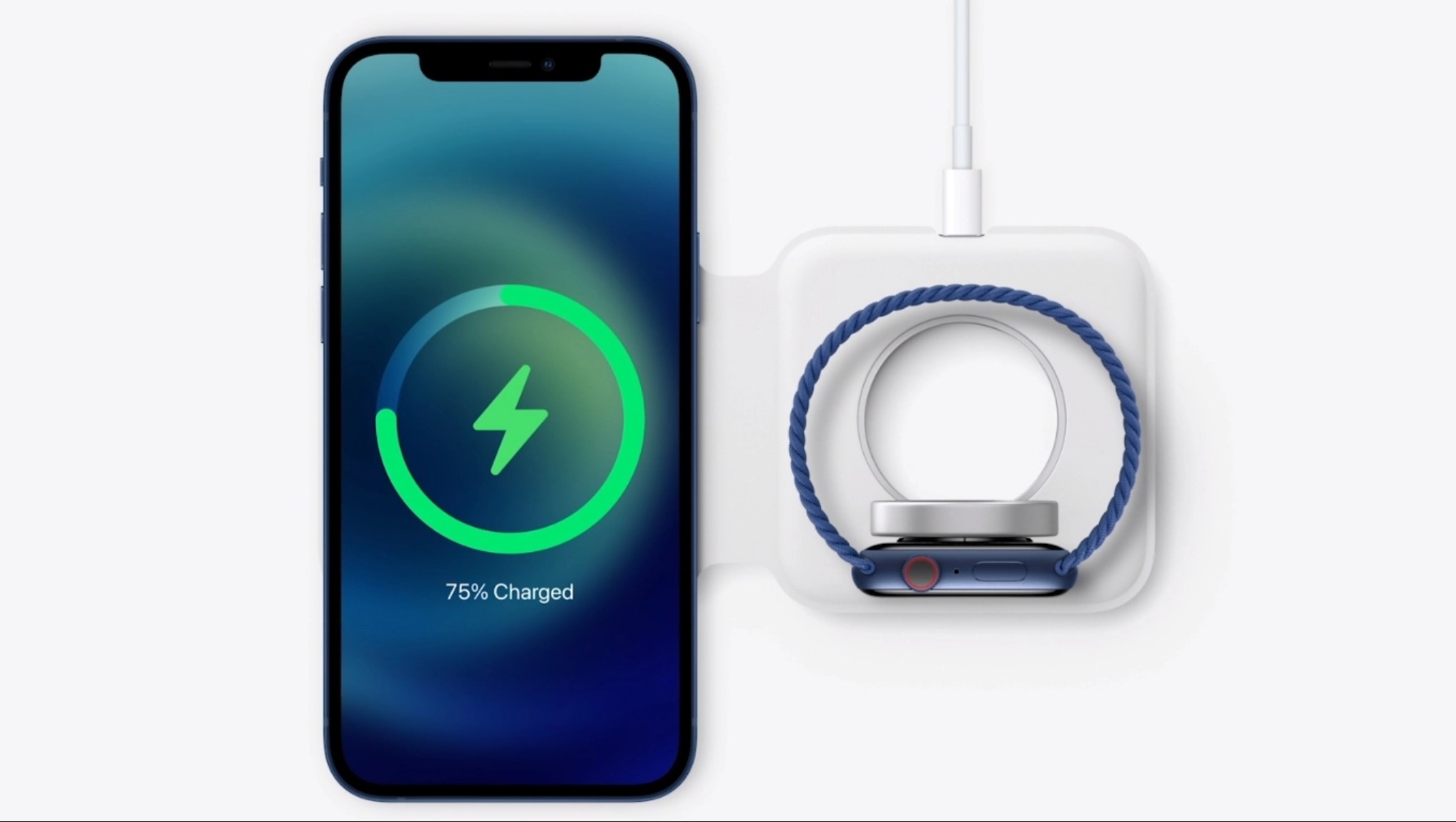Apple MagSafe Duo charging speed revealed — and it’s ridiculously slow

As far as charging is concerned, Apple has made some very unpopular decisions this year. First it removed the charging brick from the iPhone 12’s box, and now it turns out the MagSafe Duo isn’t going to charge as fast as anyone had hoped.
Despite forcing users to buy a separate 20W fast charger, which adds $19 onto the MagSafe Duo’s $129 price tag, it turns out the dual-device wireless charger barely charges at half that speed.
- See our verdict: iPhone 12 review
- iPhone 12 battery life: How long every model lasts
- Plus: iPhone 12 Pro vs iPhone 12 Pro Max - what should you buy?
As spotted by Bloomberg’s Mark Gurnam, Apple has just updated the MagSafe Duo’s store page to reveal this disappointing news. It turns out that using a 20W power brick only charges your devices at 11W speeds, and if you want to go any higher Apple says you’ll need a 27W charger. Unfortunately, that caps out at an equally-disappointing 14W charging speed.
To make things more interesting, Apple doesn’t even sell a 27 watt charger. They sell a 30 watt, another $50. So altogether, this MagSafe Duo is a $180 charger. Probably the most expensive two device charger on the market — and you don’t even get full 15 watt fast charging.November 18, 2020
As Gurnam points out, Apple doesn’t even sell a 27W charging brick right now. The closest thing it has is a 30W MacBook charger, which costs $49. Presumably this one will be compatible with the MagSafe Duo, but it’ll also only recharge up to 14W speeds. Needless to say, that's very disappointing.
Anyone with a regular MagSafe charger won’t be a stranger to these problems. It’s limited to 15W speeds, even with the 20W power brick, which is partly why it recharges the iPhone 12 so slowly. But 15W is a heck of a lot better than 11W, and why the MagSafe Duo is quite so slow isn’t clear.
Naturally, it’s easy to assume that heat issues are involved, and Apple has deliberately limited MagSafe Duo to stop overheating occurring during the charging process. That’s unfortunate for those hoping to pick one up this year, but the good news is a solution may be on the way in the form of another accessory.
Help on the way? Maybe for iPhone 13
Apple just received a new patent for a magnetic case that fits to the back of a phone and acts as a heat sink. The iPhone can detect the case in a number of ways, including a magnetic field, RFID and NFC signals, and once it does it’s able to heat up to higher temperatures than normally allowed. The case then siphons off some of the excess heat to protect the phone.
Get instant access to breaking news, the hottest reviews, great deals and helpful tips.
We can speculate that should such a case be made and sold (not all patents make it that far) Apple would be free to increase the MagSafe charging speed to something more appropriate. Provided the case is attached, mind you, and that extra purchase is not going to go down well with people who are already annoyed that they have to buy more and more products to get the most out of their charging pad.
Unfortunately, we’re not likely to see this tech directly built into the iPhone 13, since the patent recognizes that overheating the phone itself could lead to faults inside the device, including melted solder connections or other faults we don’t want to have to deal with. But such a heat dissipating magnetic case could easily come out in time for the iPhone 13.
In the meantime, our advice is to avoid the MagSafe Duo and opt for the regular MagSafe charger or one of the best wireless chargers that can juice up to three devices at once.

Tom is the Tom's Guide's UK Phones Editor, tackling the latest smartphone news and vocally expressing his opinions about upcoming features or changes. It's long way from his days as editor of Gizmodo UK, when pretty much everything was on the table. He’s usually found trying to squeeze another giant Lego set onto the shelf, draining very large cups of coffee, or complaining about how terrible his Smart TV is.
